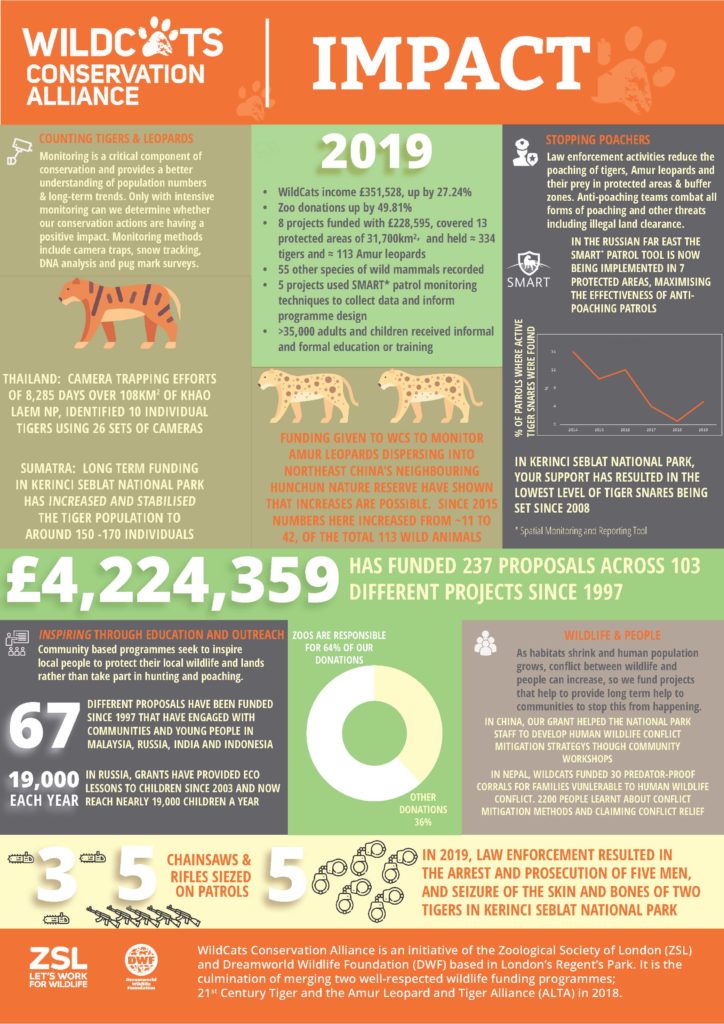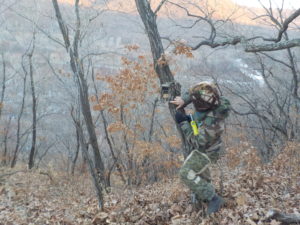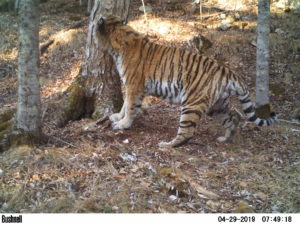All WildCats Conservation Alliance projects are subject to rigorous scrutiny to ensure they are having maximum conservation impact. Take a look at our impact infographic measuring impact, that illustrates the various ways that our projects have succeeded in 2019 and over the past 22 years.
Case study: Counting Amur leopards and tigers in Russia and China
WildCats Conservation Alliance (and ALTA and 21st Century Tiger before it) has been funding population monitoring in the Russian Far East since 2001 and long term reliable population estimates of Amur leopards and tigers since 2014.
Results demonstrate true growth in both the leopard and tiger populations, as well as increases in prey abundance, providing strong evidence that conservation activities in the area provided by NGOs such as ZSL & WCS, together with park authorities are working.
WCS are counting Amur leopards and tigers in both Russia and China and have been instrumental in the transboundary cooperation that now exists in that area.
In 2019 WCS deployed 116 cameras at 60 locations in Land of the Leopard National Park (LLNP) collecting 6,988 images of wildlife during the trapping period. Importantly, fieldwork and data analysis were carried out in close collaboration and with direct involvement from the staff at LLNP to increase their knowledge and understanding of the process.
In China, WCS deployed 100 camera traps covering 450 km2 and recorded 17 individual tigers and 13 individual leopards detected by our monitoring in Hunchun Nature Reserve—up from a single tiger 20 years ago.
ZSL Russia (Ano Amur), installed 60 cameras over 90 days in addition to 40 that were left all year round to provide important long term population ecology and behavioural data.
Cooperation both between NGOs and across borders has resulted in a reliable, statistically-rigorous multi-year dataset on Amur leopard and tiger numbers that can then be used to make conservation management decisions and gauge effectiveness of conservation interventions.




